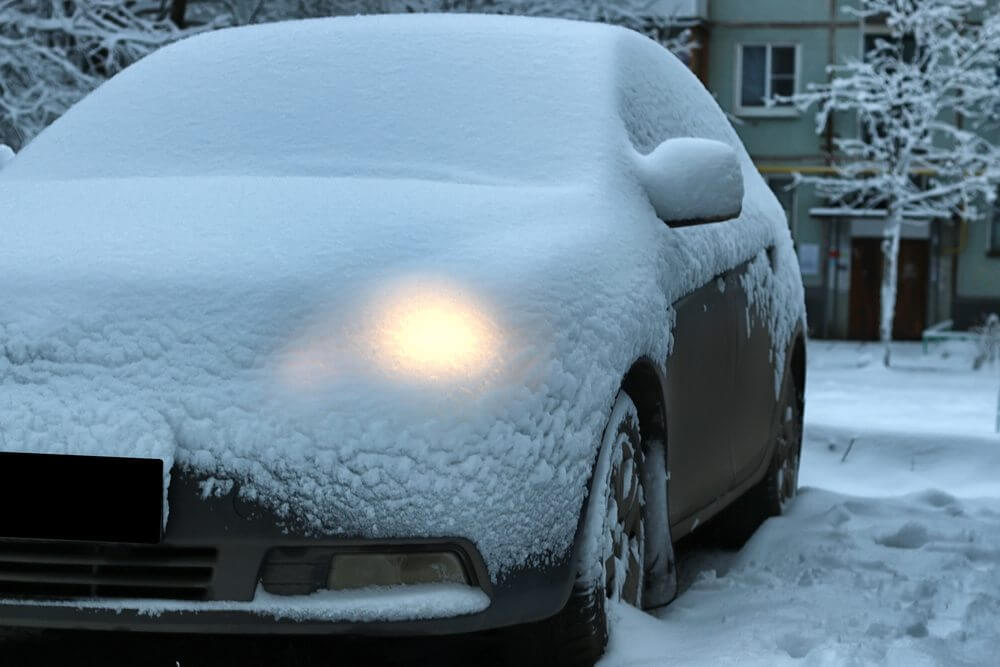Just about any weather can make it difficult to see when you’re driving. Even bright sunshine can be a problem when it glares in through your windshield. And being able to see when you drive is kind of important if you want to avoid hitting something – or someone.
Luckily, it’s fairly easy to improve driving visibility in many types of weather. If the sun’s too bright, wearing a good pair of polarizing sunglasses and lowering the sunshade in your car will help. In rain, your windshield wipers clear off the water.
Some conditions are a little more difficult to deal with. You can’t simply wipe away fog. Any time your visibility is restricted, you should slow down to a point where you have enough time to react to something when you eventually see it.
But there’s one type of weather that can make it impossible for you to see anything out of your car windows. Snow and ice. In freezing conditions, not only do you need to make sure your windows are all clear before you set off, but you need to know that your car’s systems, including defrosters and windshield wipers, can keep windows clear as you drive.
Snow and ice can also make driving difficult in other ways too. From covering your outside mirrors and driver-assistance cameras, to making it difficult to open your car door, snow and ice can pose any number of problems. So here are some of the do’s and don’ts of keeping your car free of snow and ice and avoiding the problems they can cause.
1. DO: GIVE YOURSELF ENOUGH TIME
One of the reasons you’ll see cars driving down the road with a blanket of snow over their windows is that the driver didn’t give him or herself enough time to clear off the car. Keep an eye on weather forecasts and allow yourself enough time – sometimes even as much as half an hour for heavy ice – to get rid of the snow and ice before you drive away.
2. DON’T: USE HOT WATER TO DE-ICE LOCKS
Believe it or not, in some cases, hot water can freeze faster than cooler water (it’s called the Mpemba effect). Before you use water to open a frozen lock or door, try using windshield antifreeze instead. Another trick is to heat your key with a lighter and insert it into the lock. You may need to do this a few times in fairly quick succession to get it to work. Also, you can help stop your door from freezing shut by coating the door’s seals with a silicone based oil.
If you do try water, use water that is at room temperature or cooler.
3. DO: KEEP YOUR WIPERS RAISED ON YOUR PARKED CAR WHEN SNOW AND ICE ARE EXPECTED
Raising your wipers so that their blades are off the windshield, while the car is parked, helps in a couple of ways. First, when wipers freeze to the windshield, scraping them off can damage the wiper blade and result in poor wiping. Second, it’s easier to clear your windshield with the wipers out of the way.
4. DON’T: LEAVE SNOW OR ICE ON THE ROOF OF YOUR CAR
Especially after a heavy downfall, it’s tempting to leave snow and ice on the roof of your car because you don’t have time to clean it off or it’s more difficult to remove. But doing so can casue a number of hazards. First, as you drive, the snow and/or ice can blow off the roof and block the view through your rear window. Snow blowing off your car can make it difficult for the drivers behind you to see. And ice flying off your car can crash into following cars or force drivers to swerve – neither of which is a good thing in slippery conditions.
5. DO: CLEAR THE ENTIRE CAR
In addition to getting rid of the snow and ice from all your windows and roof, hood and trunk, pay attention to other areas of the car. Check that all the lights; front, back and side; are visible so you can see and be seen. Clear off your exterior rearview mirrors and check their alignment from the driver’s position afterwards. Make sure all the cameras and proximity sensors are clear too.
In the end, you can’t do too much to clear your car of snow and ice. The more of it you remove, the less of a hazard you’ll pose to yourself and other drivers – and you’ll have a lower chance of getting into an accident at the worst time of year.

